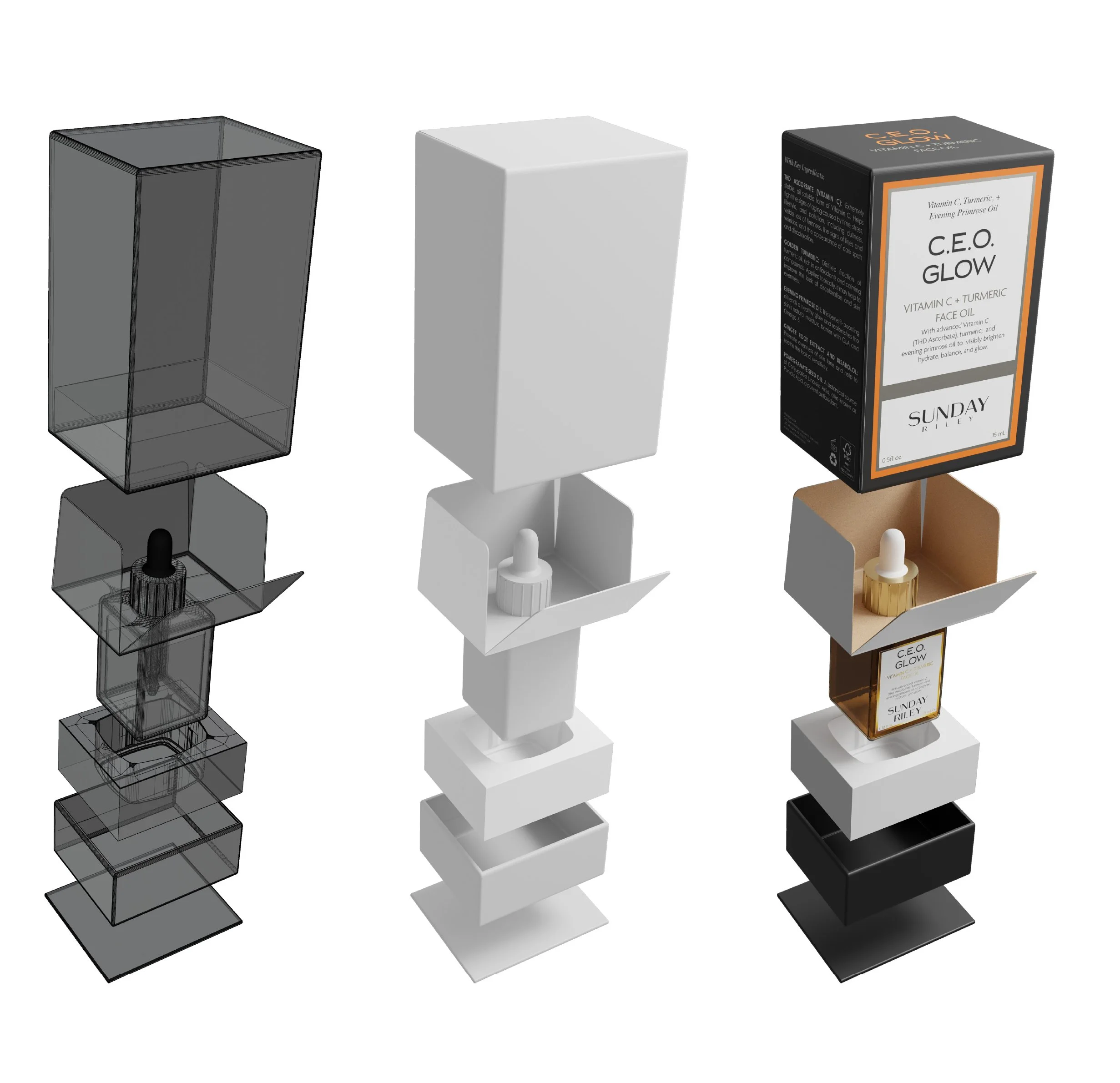Rigid Box Packaging
Rigid boxes are known for their durability, making them ideal for delicate and high-value products. The strong structure shields items like electronics, jewelry, and perfumes, protecting them from damage during transport or storage. Rigid box packaging ensures that products reach customers in pristine condition, enhancing trust and satisfaction.
Rigid boxes have become the priority of brands wishing to make their products hold a classy outlook. They are also known as set-up boxes because of their sturdy appearance. Such type of packaging offers a luxury feel due to its premium presentation and well-constructed finish. The rigid boxes provide exceptional support to the product, therefore lack the quality of flexibility or fold up. These are four times thicker than the usual carton and are mostly employed for high-end products.
Making Your Rigid Packaging
Rigid boxes, as the name suggests, are rigid and sturdy. Think of the classic “Shoe Box”. If you’ve ever purchased a nice pair of shoes or heels, they will have been packaged in a rigid box. Board games are another classic example of rigid box packaging. iPhones and other high-end electronics use rigid boxes, as do many beauty and high-end food products and spirits, just to name a few.
How are your boxes made?
Most of the processes are either done by machine or hand or various combinations of the two, depending on the specification, design and format of the final piece of packaging.
Rigid boxes start out as sheets of what is called chipboard (or greyboard or plain-board) which is like the color of newspaper (there is also an option for coloured chipboard that will give color to the inside of the box). Cutting and scoring dies are used to cut the chipboard to its correct shape and size, while the sides of the box are scored (not cut all the way through to facilitate folding).
Windles Group are experts in developing and producing the outer wrap of rigid boxes. Working with some of the best rigid box makers globally, our wraps are adorned with fine print, exquisite finishes and high-quality embellishment. It is the outer wrap that gives the rigid box it’s final appearance that catches the eye of the customer and gives them confirmation that the product they have purchased is premium and luxury.
Research, Design & Development
Consultation and Design
The customisation journey starts with an in-depth consultation where brand goals, target audience, and design ideas are discussed. During this phase, you’ll work closely with the Windles Group packaging experts to select the box structure, dimensions, and any special features. This initial phase sets the foundation, ensuring the packaging aligns with the brand’s vision and aesthetic. Print and finishes can be discussed at this early stage to ensure that the design concepts are fit-for-budget, function and appearance.
Material Selection
Next, high-quality materials are chosen to support the durability and premium look of the rigid box. Brands often select thick chipboard or paperboard for strength, with outer materials like specialty paper, linen, or even faux leather for a luxurious feel. Material choice plays a crucial role in the box’s appearance and tactile appeal, enhancing the customer’s experience.
Prototype Development
Once the design and materials are decided, a prototype is created. This sample allows brands to see, feel, and test the box’s look, ensuring it meets expectations for durability, aesthetics, and function. Adjustments can be be made during this stage to perfect the design before moving to full production.
Customisation Techniques and Finishes
Now comes the step where the brand’s identity is truly brought to life and what Windles Group have become synonymous with - premium, high quality finishes. Techniques such as Cold Foiling, Embossing, Debossing, Spot UV Varnish, and Hot Foil stamping can be applied to add texture, shine, or other eye-catching effects. The outer wrap may also have laminations applied at this stage to provide additional protection is required.
Production and Assembly
In this stage, the rigid box undergoes production in bulk. Each box is precisely cut, folded, and wrapped to create the final structure. Quality control checks are rigorously performed to ensure that each box meets your brand’s high standards.
Technical Expertise
At every stage in your project and development, Windles can advise on what finishes, print and techniques will work best. There is a fantastic array of materials, foils, varnishes, inks and embellishments available for you to design with, so it is even more important to discuss these with our team.
The example below shows the exploded diagram of a rigid box pack - complete with inserts, mouldings, and a variety of print finishes.
3D Modelling & Visualisation
As part of the process of development, our studio can generate 3d photo-realistic images of your concepts and design. Taking a flat piece of PDF artwork, modelling the structure and contents, and then wrapping the model in the print and finishes, gives you a fantastic opportunity to see your packaging come to life prior to any production stages.



























